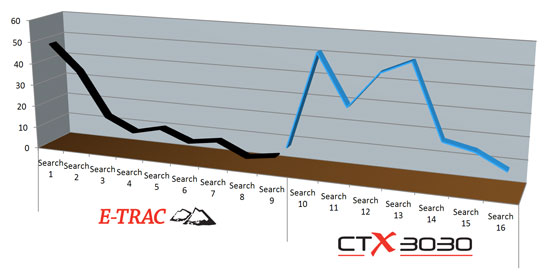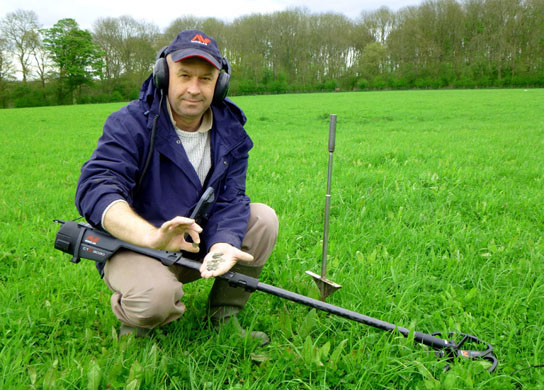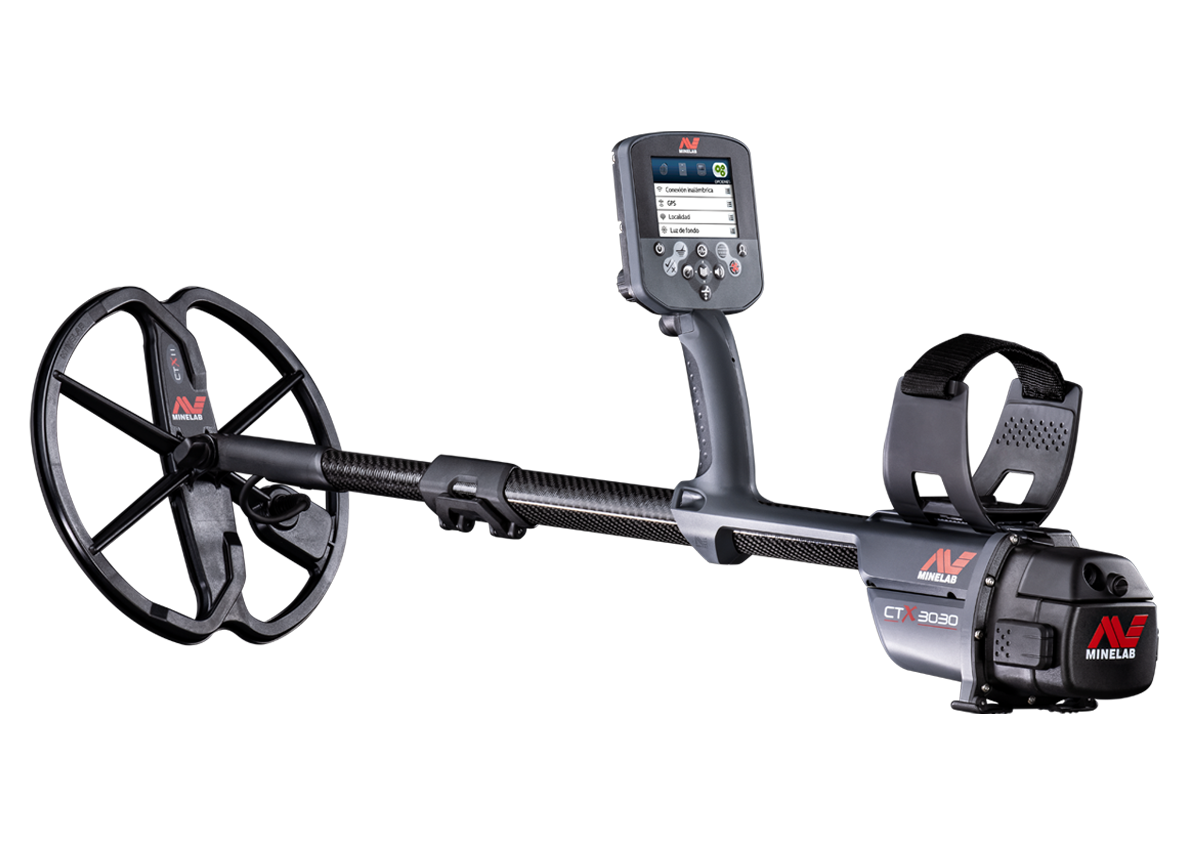Well what a question to ask eh? The CTX 3030 has only been released in the last few days, unfair to ask it? I think not. However perhaps it is a little premature until we get all the reports from field tests and other users. I’m no techno-expert, but briefly FBS 2 utilises multiple frequency transmission and coil-to-detector data communication to locate targets in a wide variety of soil conditions. However, I would like to make a submission of my own relating to the efficiency of the new FBS 2. Of course at this stage this information relates purely to my own personal experience and no-one else’s.
I was extremely privileged to be considered to field test this detector before it was generally known about or commercially available, and this is what I found out. I already have a Minelab FBS metal detector and have used it for many years, it is superb and has made me some fantastic, and previously only dreamed of finds. So I took the CTX 3030 onto as many of the sites as I could at this time of year.
Now I am a creature of habit; a site that gave me a gold coin a decade ago will still be detected today... in the hope of that chance piece of luck repeating itself. When field testing, luck aside, such sites that have been heavily worked offer a chance to test the capabilities of new machines.
There’s one site in particular that I had worked very hard this year with my FBS detector, and as always finds increased at the start of the season and then showed a rapid overall decline. I keep the statistics of Roman coin finds for every search, so I was able to compare the results from the initial E-TRAC searches and CTX 3030 searches. The results are pretty amazing.
On this site I had conducted nine previous searches with an E-TRAC (FBS technology) which recovered 190 coins. After the finds rate decreased I considered the site to be pretty much exhausted for this year. Switching to the CTX 3030 (FBS 2 technology) proved me somewhat wrong. A second series of searches revealed another 214 coins. The results are shown in the following table. One other consideration is that these 214 coins were found in rather less time than the 190 coins with the E-TRAC.
Please bear in mind the searches all involve three large fields.
Results using an FBS detector (E-TRAC) on a heavily searched site for the first time 2012 season
| Search | Roman coin finds | |
|---|---|---|
| E-TRAC Search 1 | 49 | |
| E-TRAC Search 2 | 37 | |
| E-TRAC Search 3 | 17 | |
| E-TRAC Search 4 | 11 | Plus a Georgian penny |
| E-TRAC Search 5 | 14 | |
| E-TRAC Search 6 | 9 | |
| E-TRAC Search 7 | 11 | |
| E-TRAC Search 8 | 5 | |
| E-TRAC Search 9 | 7 |
Results Using FBS 2 detector (CTX 3030) on the above already heavily searched Roman site
| Search | Roman coin finds | |
|---|---|---|
| CTX 3030 Search 10 | 51 | Plus a hammered silver penny |
| CTX 3030 Search 11 | 28 | Plus two Georgian pennies |
| CTX 3030 Search 12 | 44 | |
| CTX 3030 Search 13 | 50 | |
| CTX 3030 Search 14 | 17 | Plus a hammered silver penny |
| CTX 3030 Search 15 | 14 | |
| CTX 3030 Search 16 | 7 |

Both sets of results show a good start and then a decline, as stated this is always to be expected, with a few stray peaks here and there. However, from the end of the FBS detector searches to the start of the CTX 3030 searches there can be seen a refreshment of numbers to a very significant degree. It appears coin finds were tailing off and then were quickly refreshed. Only a week separated the end of the first searches to the commencement of the second set. The fields remained in the same soil condition i.e. not ploughed or disturbed. The only significant thing was that the first two CTX 3030 searches were made in a normally unwelcome period of heavy rainfall. Most detectors do not like absolutely saturated soils the CTX 3030 seemed to thrive on them.

It has been said that statistics can be “massaged” I suppose that’s possible in some cases, but in this case I found these quantities of coins. Overall it was noticeable that the CTX 3030 was making finds deeper than the FBS detector... what factors influenced this? As stated before I’m of course no techno expert. All I know was that the FBS 2 detector with its other performance related factors refreshed a site and found things at greater depths.
Again as stressed I’m no techno expert, the CTX 3030 simply did what it did... this is basically my experience of FBS and FBS 2 detectors on the same site. In my opinion it shows that FBS 2 is a definite improvement in performance. I’m certain and hope that as many people as possible will share this experience too... and when it comes to sharing experience well as someone once so aptly put it “Isn`t that what life`s all about?” In case anyone asks, the CTX 3030 overall also recovered more artefacts too, however as someone else also once said “But that`s for another time”.
Julian Evan-Hart





















Comments
Thank you,
If this is not the place to ask questions, please delete the following:
I see that "three large fields" were involved. Were the areas searched and the time spent in each field roughly the same for both machines?
What were the ground/soil characteristics?
Importantly, what were the settings used on the E-TRAC and the CTX 3030
When using the E-TRAC unsupported I suffered from arm fatigue after only an hour of use, with the CTX 3030 I can easily detect for 3 hours straight with very few ill effects, pure bliss for this gold prospector :-)
Interested in the settings you applied to the CTX 3030.
Hope there will be a follow-up article
I have done two parks with the CTX 3030 now, that myself and a mate have hammered to death over the last couple of years with E-TRACs and Musketeers and found that the finds with the CTX 3030 take us back at least to the same volume as a year back. There are others in Australia that have seen similiar trends with the CTX 3030. Great post.